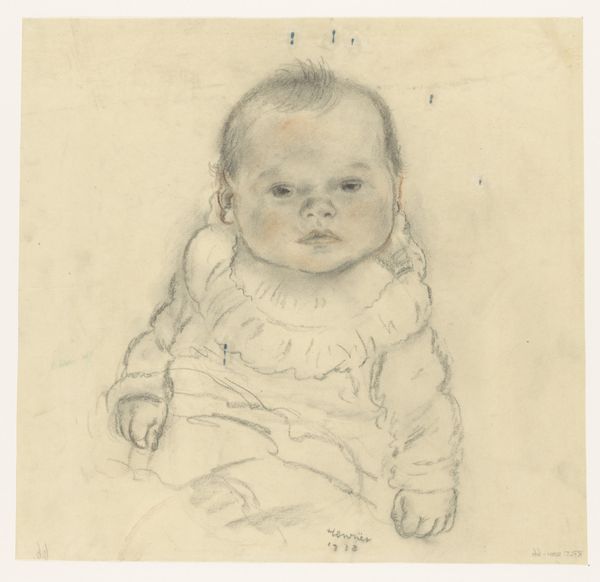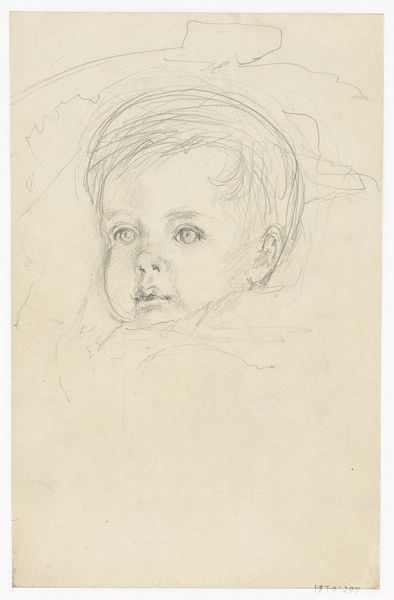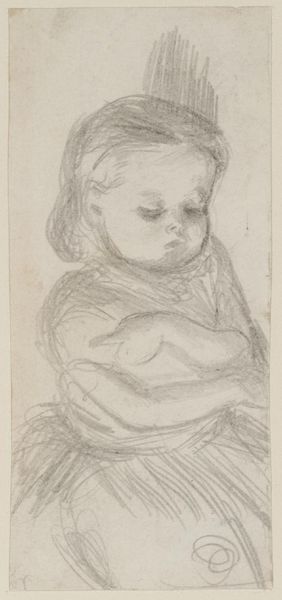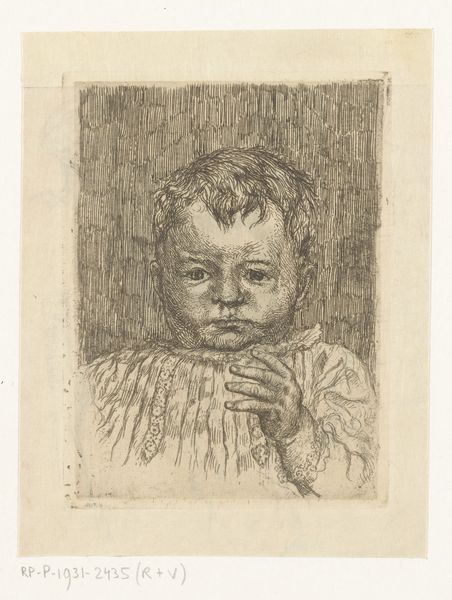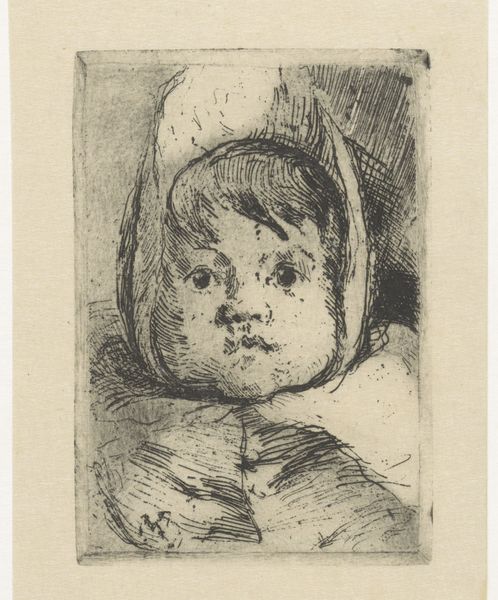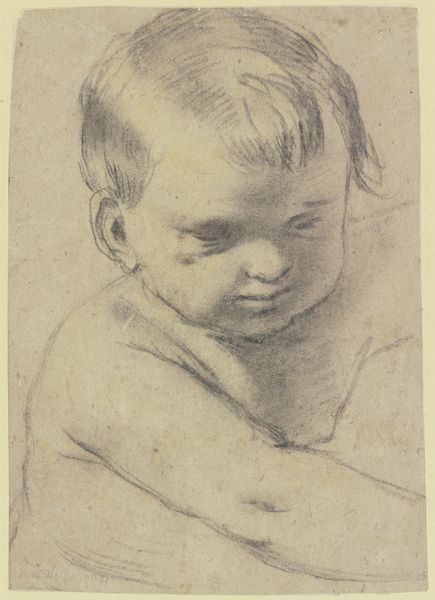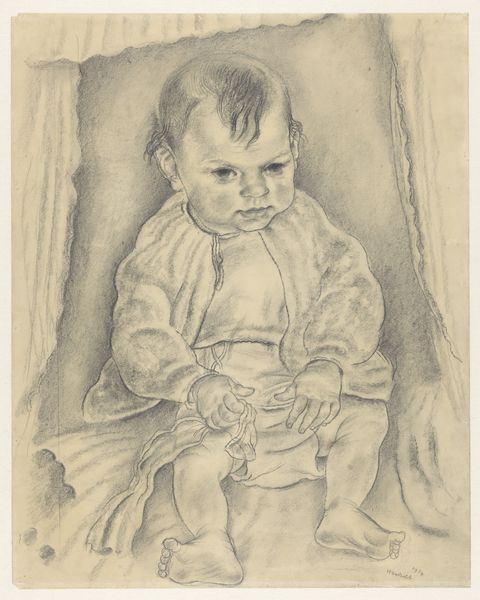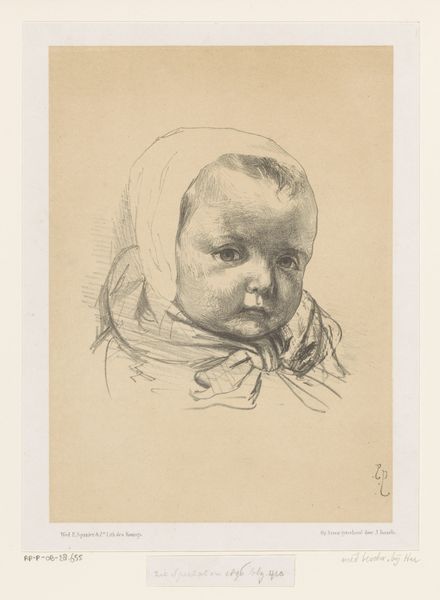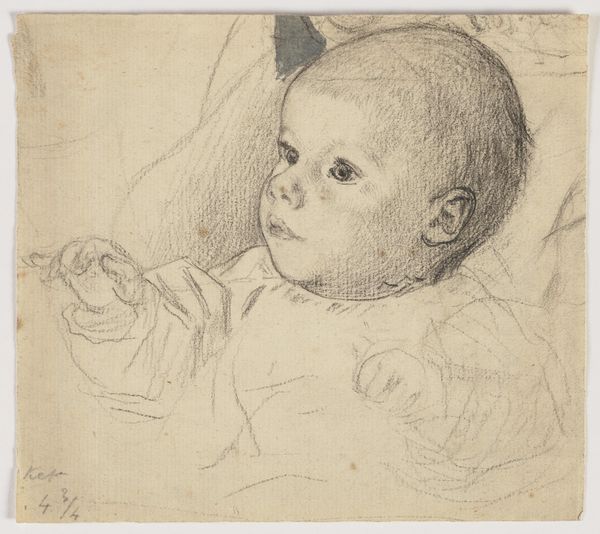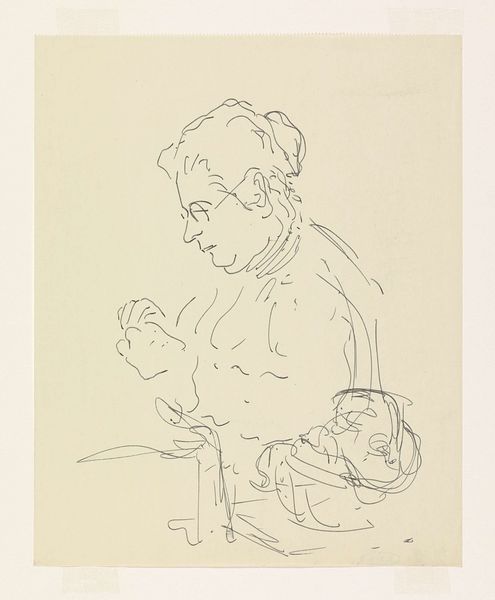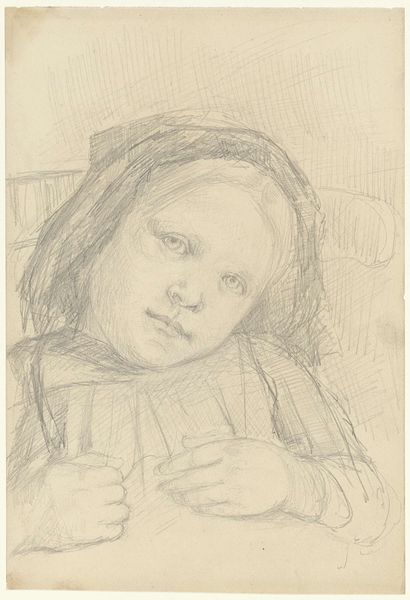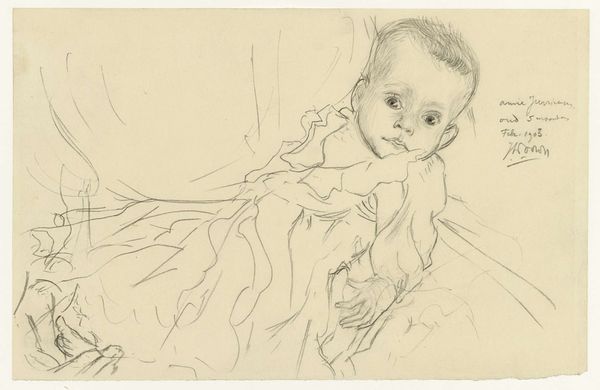
drawing, pencil
#
portrait
#
pencil drawn
#
drawing
#
pencil sketch
#
figuration
#
pencil drawing
#
pencil
Dimensions: height 174 mm, width 242 mm
Copyright: Rijks Museum: Open Domain
Editor: So, this is "Studie van een kind," or "Study of a Child," by Jozef Israëls, dating from 1834 to 1911. It's a pencil drawing here at the Rijksmuseum. I'm really struck by how delicate the lines are; the whole piece has such a tender quality. What catches your eye when you look at it? Curator: The ephemeral quality, definitely. This isn't just a child; it's the *idea* of a child. Pencil as a medium allows for that; think of charcoal sketches in the Renaissance as explorations of the human form in search of an ideal. This searching line evokes the transient nature of childhood itself. Look at the softness of the hatching— where have we seen something like that before? Editor: Hmm… You mean like Da Vinci’s sfumato? Where the forms kind of melt into each other? I guess I do see something similar here… It’s interesting to think about it not just as a simple drawing of a kid. Curator: Precisely! This child isn’t fully formed on the page, just as a child’s personality is still developing. Even the rougher, darker strokes have meaning— the weight of potential, perhaps? And notice the eyes - so much intent in them. What future possibilities might they embody? What memories will they carry? Editor: It's amazing how much can be read into a simple pencil sketch. Now I see that the sketch quality adds so much depth. Curator: It’s more than just a likeness; it's an exploration of being, captured through the enduring symbol of childhood. It mirrors how we constantly sketch and resketch memories, and this piece feels like an effort at preservation, not simply rendering an image. Editor: This makes me appreciate how art can act as a powerful symbol, going beyond the obvious and hinting at something more profound. Curator: Agreed. Every line is an attempt to fix a fleeting moment. What we have gained is an exercise in preservation using simple, raw media.
Comments
No comments
Be the first to comment and join the conversation on the ultimate creative platform.
